Abstract
Thermal ultrasound can be effective in increasing extensibility of collagen, thus aiding joint mobilization and stretching. In 1995, we reported on the rate of temperature decay following 3-MHz ultrasound in subcutaneous tissues. We repeated that study at 1-MHz frequency to see if the stretching window is different for deep muscle. Twenty subjects had two 23-gauge thermistors inserted 2.5 cm and 5 cm deep into their triceps surae muscle. We administered 1-MHz continuous ultrasound at 1.5 W/cm2 until the tissue temperature increased 4°C (vigorous heating). Immediately following the treatment, we recorded the rate at which the temperature dropped at 30second intervals. We ran a stepwise nonlinear regression analysis to predict temperature decay as a function of time following ultrasound treatment. There was a significant nonlinear relationship between time and temperature decay. At 2.5 cm, the average time for the temperature to drop each degree was: 1°C = 2:34; 2°C = 6:35; 3°C = 12:10: and 4°C = 21:14. At 5 cm, the average time for the temperature to drop each degree was: 1°C = 2:31, 2°C = 6:50: 3°C = 14:32; and 4°C = 27:49. Based upon prior research, thermal decay of 1-MHz ultrasound was slower than 3 MHz, and the deeper tissue cooled at a slower rate than superficial tissue following 1-MHz ultrasound. The data illustrated that the stretching window was open longer for deep-seated structures than for superficial ones.
Full text
PDF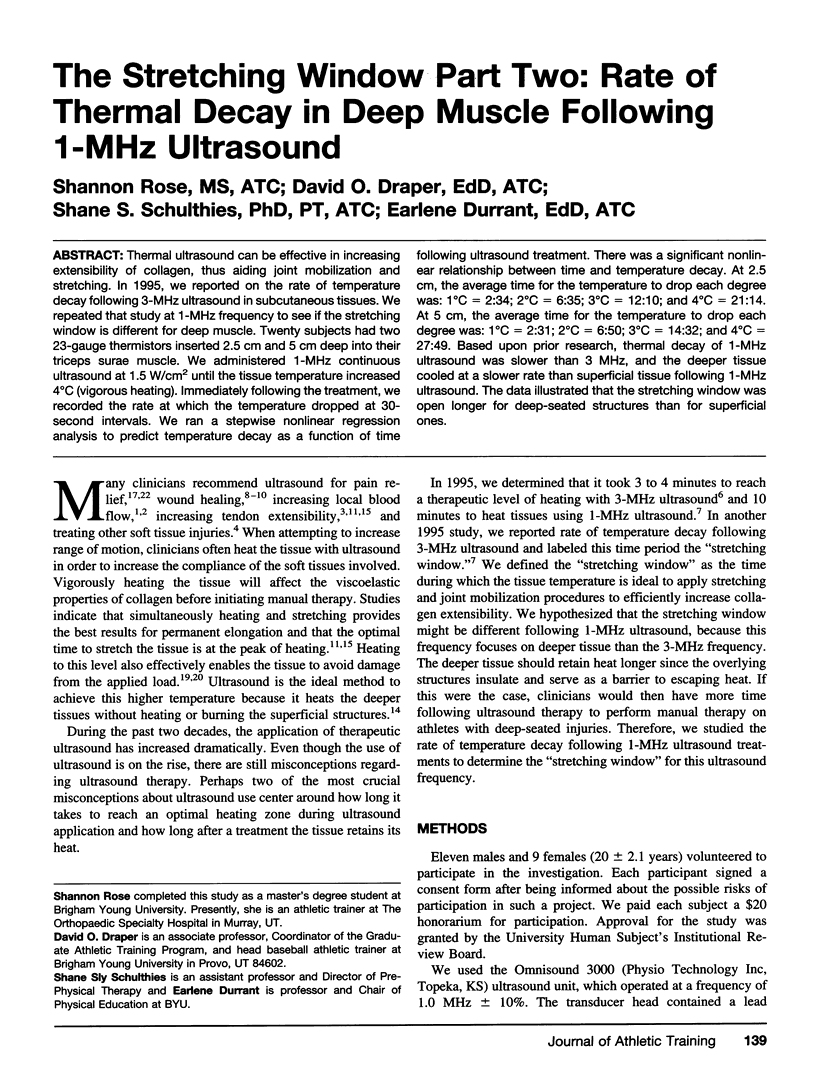
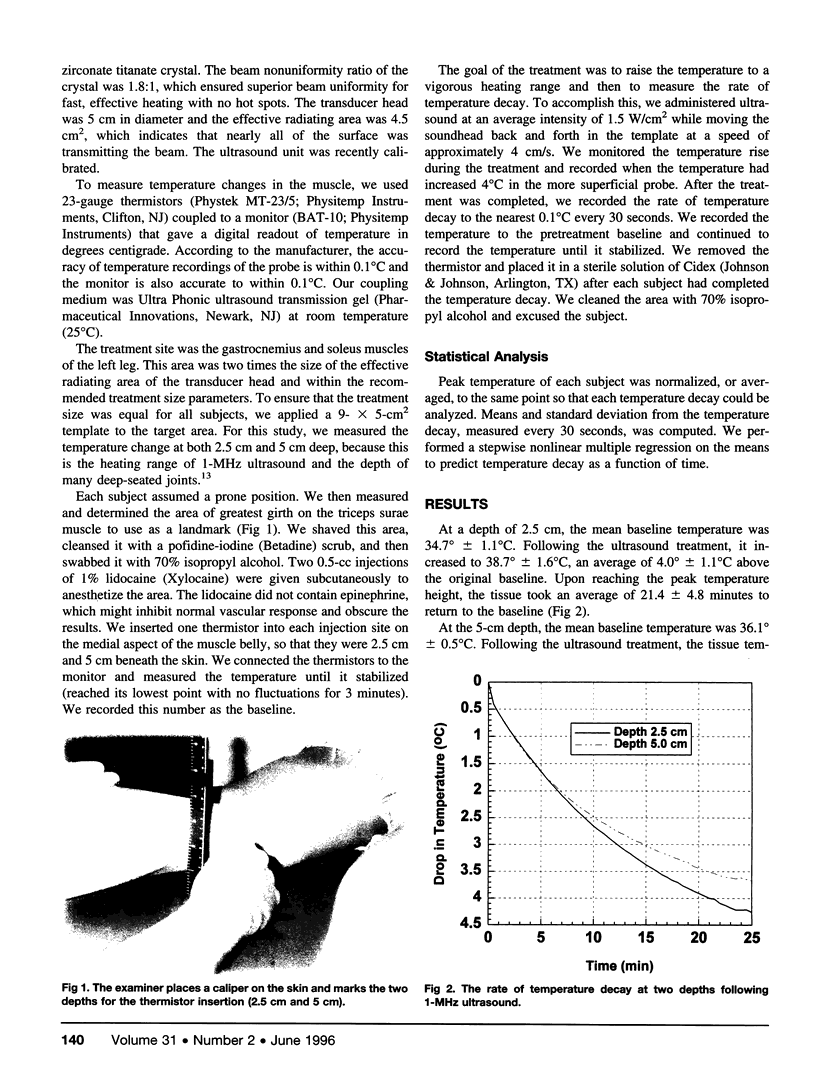
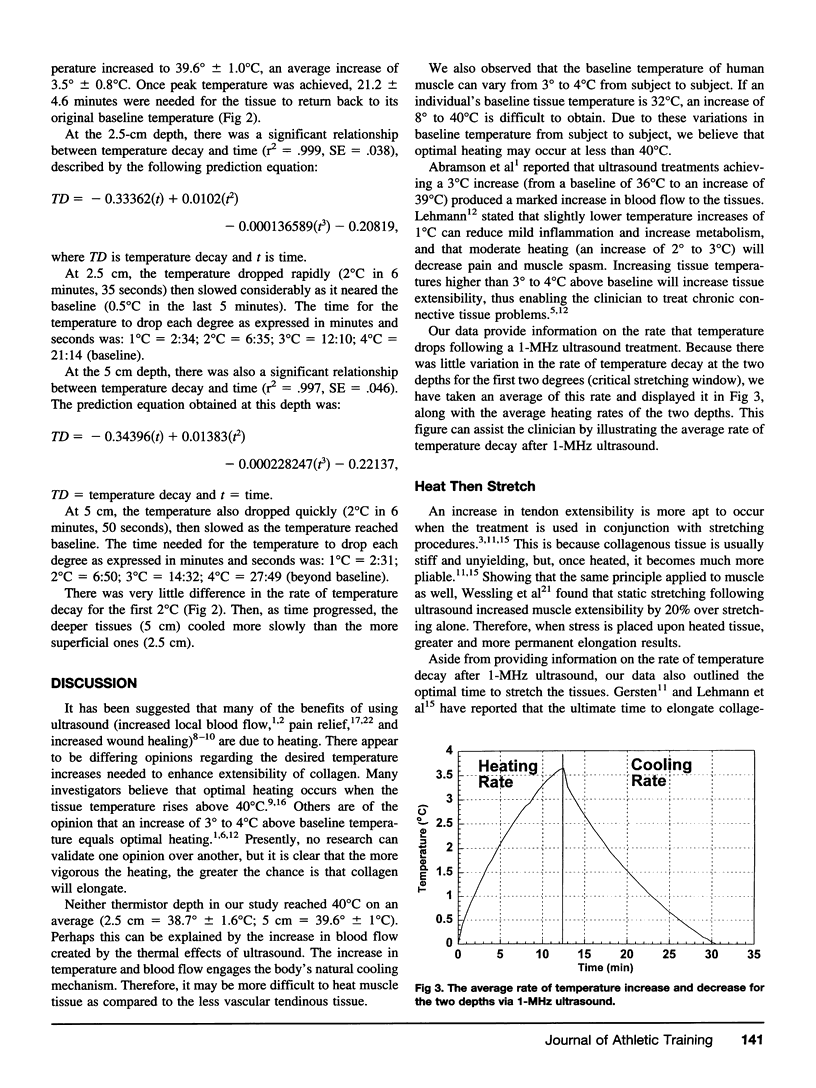
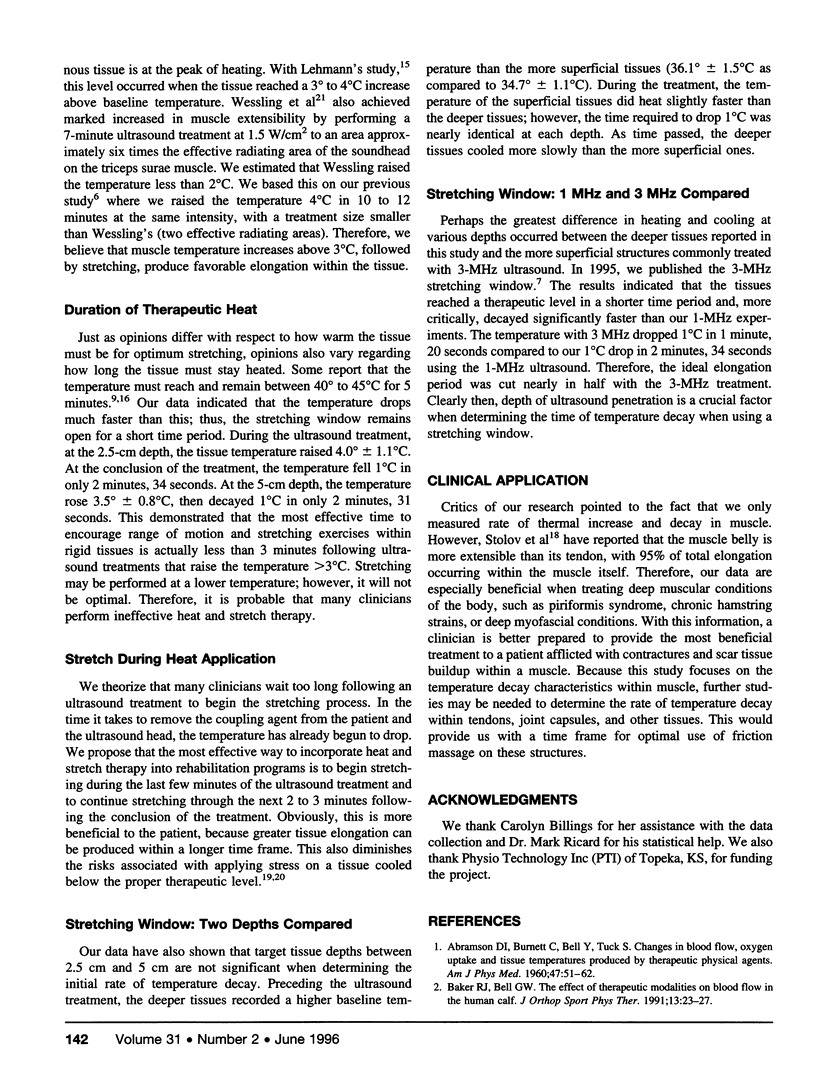
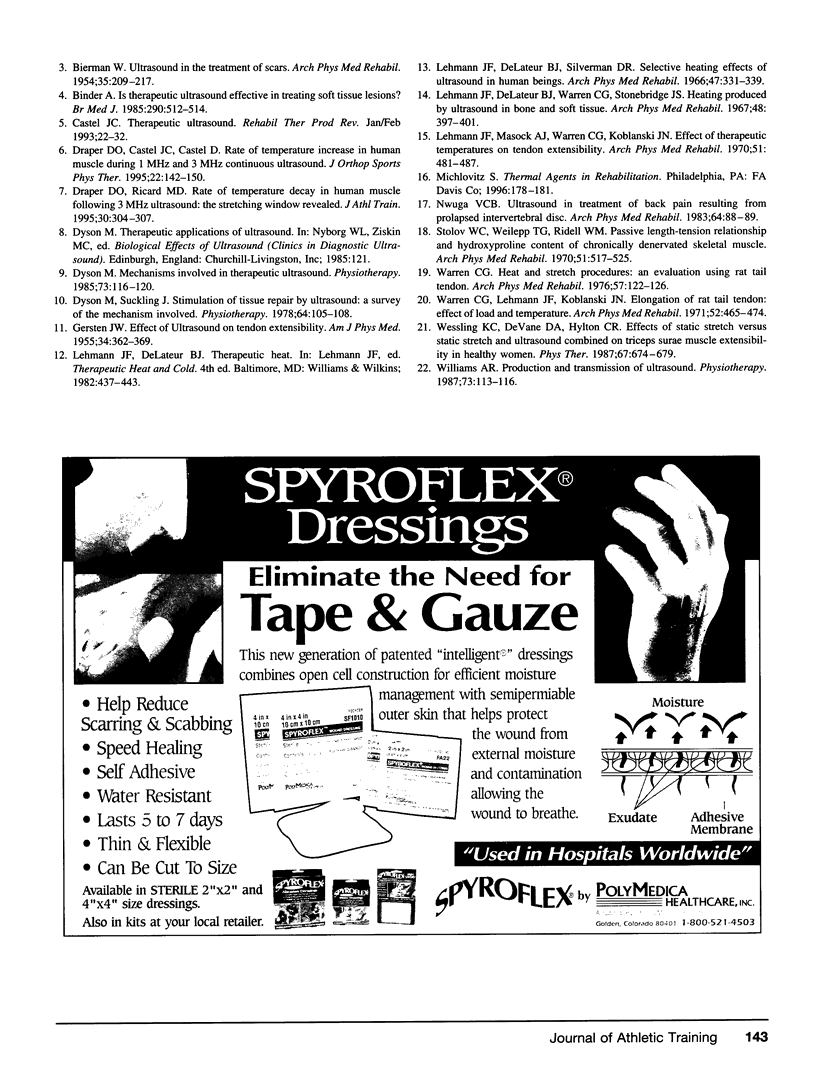
Images in this article
Selected References
These references are in PubMed. This may not be the complete list of references from this article.
- ABRAMSON D. I., BURNETT C., BELL Y., TUCK S., Jr, REJAL H., FLEISCHER C. J. Changes in blood flow, oxygen uptake and tissue temperatures produced by therapeutic physical agents. Am J Phys Med. 1960 Apr;39:51–62. [PubMed] [Google Scholar]
- BIERMAN W. Ultrasound in the treatment of scars. Arch Phys Med Rehabil. 1954 Apr;35(4):209–214. [PubMed] [Google Scholar]
- Binder A., Hodge G., Greenwood A. M., Hazleman B. L., Page Thomas D. P. Is therapeutic ultrasound effective in treating soft tissue lesions? Br Med J (Clin Res Ed) 1985 Feb 16;290(6467):512–514. doi: 10.1136/bmj.290.6467.512. [DOI] [PMC free article] [PubMed] [Google Scholar]
- Draper D. O., Castel J. C., Castel D. Rate of temperature increase in human muscle during 1 MHz and 3 MHz continuous ultrasound. J Orthop Sports Phys Ther. 1995 Oct;22(4):142–150. doi: 10.2519/jospt.1995.22.4.142. [DOI] [PubMed] [Google Scholar]
- Draper D. O., Ricard M. D. Rate of Temperature Decay in Human Muscle Following 3 MHz Ultrasound: The Stretching Window Revealed. J Athl Train. 1995 Oct;30(4):304–307. [PMC free article] [PubMed] [Google Scholar]
- Dyson M., Suckling J. Stimulation of tissue repair by ultrasound: a survey of the mechanisms involved. Physiotherapy. 1978 Apr;64(4):105–108. [PubMed] [Google Scholar]
- GERSTEN J. W. Effect of ultrasound on tendon extensibility. Am J Phys Med. 1955 Apr;34(2):362–369. [PubMed] [Google Scholar]
- Lehmann J. F., DeLateur B. J., Silverman D. R. Selective heating effects of ultrasound in human beings. Arch Phys Med Rehabil. 1966 Jun;47(6):331–339. [PubMed] [Google Scholar]
- Lehmann J. F., DeLateur B. J., Warren C. G., Stonebridge J. S. Heating produced by ultrasound in bone and soft tissue. Arch Phys Med Rehabil. 1967 Aug;48(8):397–401. [PubMed] [Google Scholar]
- Lehmann J. F., Masock A. J., Warren C. G., Koblanski J. N. Effect of therapeutic temperatures on tendon extensibility. Arch Phys Med Rehabil. 1970 Aug;51(8):481–487. [PubMed] [Google Scholar]
- Nwuga V. C. Ultrasound in treatment of back pain resulting from prolapsed intervertebral disc. Arch Phys Med Rehabil. 1983 Feb;64(2):88–89. [PubMed] [Google Scholar]
- Stolov W. C., Weilepp T. G., Jr, Riddell W. M. Passive length-tension relationship and hydroxyproline content of chronically denervated skeletal muscle. Arch Phys Med Rehabil. 1970 Sep;51(9):517–525. [PubMed] [Google Scholar]
- Warren C. G., Lehmann J. F., Koblanski J. N. Elongation of rat tail tendon: effect of load and temperature. Arch Phys Med Rehabil. 1971 Oct;52(10):465–passim. [PubMed] [Google Scholar]
- Warren C. G., Lehmann J. F., Koblanski J. N. Heat and stretch procedures: an evaluation using rat tail tendon. Arch Phys Med Rehabil. 1976 Mar;57(3):122–126. [PubMed] [Google Scholar]
- Wessling K. C., DeVane D. A., Hylton C. R. Effects of static stretch versus static stretch and ultrasound combined on triceps surae muscle extensibility in healthy women. Phys Ther. 1987 May;67(5):674–679. doi: 10.1093/ptj/67.5.674. [DOI] [PubMed] [Google Scholar]



